
Burton Stephen Lancaster was an American actor and producer. Initially known for playing tough guys with a tender heart, he went on to achieve success with more complex and challenging roles over a 45-year career in films and television series. He was a four-time nominee for the Academy Award for Best Actor, and he also won two BAFTA Awards and one Golden Globe Award for Best Lead Actor. The American Film Institute ranks Lancaster as #19 of the greatest male stars of classic Hollywood cinema.

The Blue Dahlia is a 1946 American crime film and film noir with an original screenplay by Raymond Chandler directed by George Marshall and starring Alan Ladd, Veronica Lake and William Bendix. It was Chandler's first original screenplay.

John Hodiak was an American actor who worked in radio, stage and film.

Audrey Mary Totter was an American radio, film, and television actress and Metro-Goldwyn-Mayer contract player in the 1940s.

Ella Wallace Raines was an American film and television actress active from the early 1940s through the mid-1950s. Described as "sultry" and "mysterious", the green-eyed star appeared frequently in crime pictures and film noir, but also in drama, comedy, Westerns, thrillers, and romance.

Wendell Reid Corey was an American stage, film, and television actor.
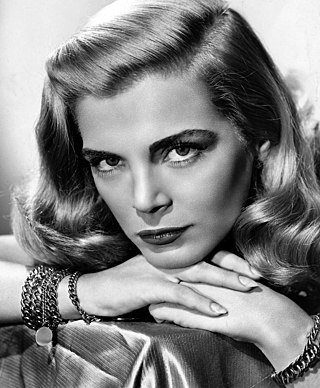
Lizabeth Virginia Scott was an American actress, singer and model for the Walter Thornton Model Agency, known for her "smoky voice" and being "the most beautiful face of film noir during the 1940s and 1950s". After understudying the role of Sabina in the original Broadway and Boston stage productions of The Skin of Our Teeth, she emerged in such films as The Strange Love of Martha Ivers (1946), Dead Reckoning (1947), Desert Fury (1947), and Too Late for Tears (1949). Of her 22 films, she was the leading lady in all but three. In addition to stage and radio, she appeared on television from the late 1940s to early 1970s.
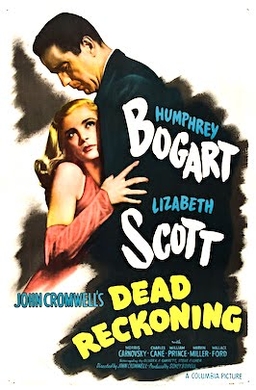
Dead Reckoning is a 1947 American film noir directed by John Cromwell and starring Humphrey Bogart, Lizabeth Scott, Morris Carnovsky, and William Prince. It was written by Steve Fisher and Oliver H.P. Garrett, based on a story by Gerald Drayson Adams and Sidney Biddell, adapted by Allen Rivkin. Its plot follows a war hero, Warren Murdock (Bogart) who begins investigating the death of his friend and fellow soldier, Johnny Drake (Prince). The investigation leads Murdock to his friend's mistress, a mysterious woman whose husband Drake was accused of murdering.
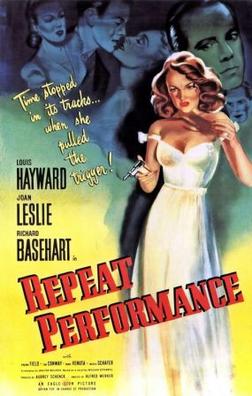
Repeat Performance is a 1947 American film noir starring Louis Hayward and Joan Leslie. The film was released by Eagle-Lion Films, directed by Alfred L. Werker, and produced by Aubrey Schenck.

Too Late for Tears is a 1949 American film noir directed by Byron Haskin and starring Lizabeth Scott, Arthur Kennedy, Dan Duryea, and Don DeFore. Its plot follows a ruthless woman who resorts to perpetrating a murder spree in an attempt to retain a suitcase containing US$60,000 that does not belong to her. The screenplay was written by Roy Huggins, developed from a serial he wrote for The Saturday Evening Post.

The Strange Love of Martha Ivers is a 1946 American film noir drama directed by Lewis Milestone and starring Barbara Stanwyck, Van Heflin, Lizabeth Scott, and Kirk Douglas in his film debut. It follows a man who is reunited with his childhood friend and her husband; both the childhood friend and her husband believe that the man knows the truth about the mysterious death of the woman's wealthy aunt years prior. The screenplay was written by Robert Rossen, adapted from the short story "Love Lies Bleeding" by playwright John Patrick.

Byron Conrad Haskin was an American film and television director, special effects creator and cinematographer. He is best known for directing The War of the Worlds (1953), one of many films where he teamed with producer George Pal.

I Walk Alone is a 1947 film noir directed by Byron Haskin and starring Burt Lancaster and Lizabeth Scott, with a supporting cast featuring Wendell Corey and Kirk Douglas.

Variety Girl is a 1947 American musical comedy film directed by George Marshall and starring Mary Hatcher, Olga San Juan, DeForest Kelley, Frank Ferguson, Glenn Tryon, Nella Walker, Torben Meyer, Jack Norton, and William Demarest. It was produced by Paramount Pictures. Numerous Paramount contract players and directors make cameos or perform songs, with particularly large amounts of screen time featuring Bing Crosby and Bob Hope. Among many others, the studio contract players include Gary Cooper, Alan Ladd, Paulette Goddard, Ray Milland, William Holden, Burt Lancaster, Robert Preston, Veronica Lake, William Bendix, Barbara Stanwyck and Paula Raymond.

You Came Along is a 1945 romantic comedy-drama film set in World War II, directed by John Farrow. The original Robert Smith screenplay was rewritten by Ayn Rand. You Came Along stars Robert Cummings and in her film debut, Lizabeth Scott.
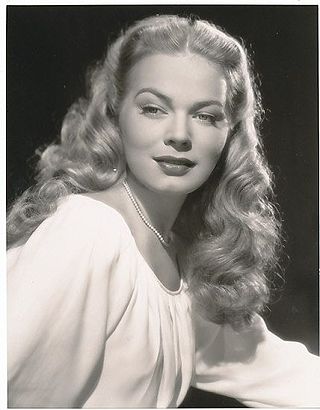
Kristine Miller was an American film actress, best-remembered for her appearances in film noir and Westerns. A discovery of Paramount producer Hal Wallis, she appeared in I Walk Alone (1948), Jungle Patrol (1948), Too Late for Tears (1949), Shadow on the Wall (1950), and the TV series Stories of the Century (1954–55).

Todd Hughes is an American screenwriter, author, producer and film director. He is a Columbia University graduate and currently resides in Palm Springs, California and Mérida, Yucatán.
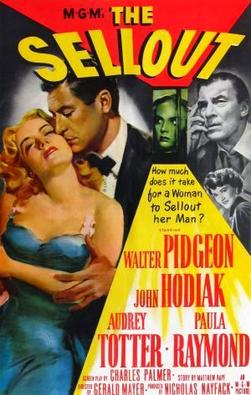
The Sellout is a 1952 American film noir directed by Gerald Mayer and starring Walter Pidgeon, John Hodiak, Audrey Totter and Paula Raymond.
Lizabeth Scott (1922–2015) appeared in 22 feature films from 1945 to 1972. In addition to stage and radio, she appeared on television from the late 1940s to early 1970s.
Ramona Stewart was an American author. She is best known for her 1946 novel Desert Town and the 1970 supernatural thriller The Possession of Joel Delaney, both of which were adapted into films.

















